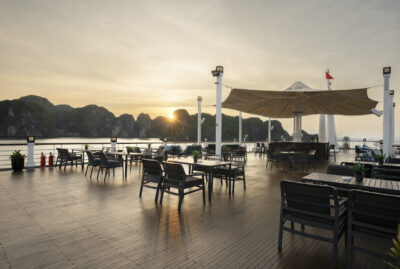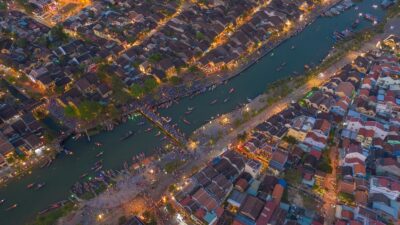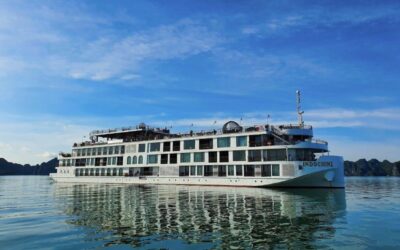To make your Vietnam tour package truly unforgettable, understanding the country’s diverse Vietnam weather is key. Vietnam’s unique geography, an S-shaped landmass stretching over 2,000 miles, creates distinct climate zones. The country’s climate is predominantly tropical monsoon, characterized by distinct wet and dry seasons. Vietnam generally experiences hot and humid weather, with temperatures ranging from 20°C to 35°C (68°F to 95°F) throughout the year.
The wet season, heavily influenced by the southwest monsoon, typically runs from May to October, bringing heavy rainfall and occasional typhoons, especially in the north. The dry season, marked by sunny skies and lower humidity, stretches from November to April. Understanding these regional weather variations is paramount to planning an optimal and enjoyable trip to this captivating Southeast Asian nation. For a broader understanding of how to approach your journey, our comprehensive Vietnam travel guide offers valuable insights into destinations, culture, and practical tips beyond just the weather.
While the period from March to May is often highlighted as offering the best weather countrywide for Vietnam, the truth is there’s genuinely no “bad” time to visit. Thanks to its elongated shape and diverse microclimates, favorable holiday skies and pleasant conditions can almost always be found in some part of the country, regardless of the month. Don’t let the “best time” generalization fool you! You might encounter snow in the mountainous north while southern beaches bask in 32°C sunshine simultaneously. Planning requires looking at each region.
Overall, many consider November to April the best time to visit Vietnam overall, offering pleasant temperatures and less rain in many key areas. March to May can also offer favourable weather across the country.
Decoding Vietnam’s Weather: Regional Breakdowns & Key Characteristics

To truly grasp Vietnam’s weather, it’s beneficial to think of the country in terms of three primary weather regions: Northern Vietnam, Central Vietnam, and Southern Vietnam. Additionally, the Mountainous Far North presents its own distinct microclimate, often cooler than the rest of the northern region.
While Southern Vietnam’s weather boasts fairly constant warm temperatures year-round (typically between 25-35°C), Northern Vietnam’s weather is characterized by more distinct winter and summer seasons, with noticeably cooler temperatures during the winter months. Significant weather variations can even occur within these broad regions due to local geographical factors such as mountain ranges and coastal influences.
North Vietnam Weather (Hanoi, Halong Bay, Sapa, Ninh Binh)
Northern Vietnam experiences a climate with two distinct seasons:
- Winter (November – April): This period is cool and mostly dry, with average temperatures around 17-22°C. January to March are typically the coldest months, with December and January sometimes bringing particularly cold snaps.
- Summer (May – October): This period is generally hot and humid, accompanied by high rainfall. The months of July to September often register as the wettest months of the year.
Halong Bay Weather

When planning a visit to the iconic Halong Bay, consider the following weather patterns:
- Best Visit Times (for sunny skies, clear views, and pleasant temperatures): The periods from April to June (warm, clear, sunny) and September to November (mix of sun/clouds, warm to cool) offer a higher chance of enjoying these ideal conditions.
- December to March: Expect cool to cold temperatures, along with misty and cloudy conditions. While this might obscure long-distance views, it can also create a wonderfully mystical atmosphere, with the famous karsts shrouded in ethereal mist. January can be particularly frigid and hazy. Temperatures can be as low as 10-15°C.
- June to August: This season is often stormy, hot, and humid. Severe weather, including tropical storms, can occasionally lead to cruise cancellations for safety reasons, though this is rare.
- March: This month is often noted for bringing clear blue skies and minimal rain, making it an excellent time for photography and cruising.
Weather in Hanoi

The capital city, Hanoi, experiences the following weather trends. The best time to visit Hanoi is generally April-June (warm to hot, clear skies) or September-December (cooler, around 25°C, sunny – perfect for exploring).
- April to June: Days are normally hot, with temperatures occasionally above 30°C, and predominantly clear skies.
- September to November: This autumn period sees cooler temperatures (around 25°C) and beautiful sunny skies – perfect conditions for exploring the capital’s historic streets and attractions.
- June to August: Prepare for soaring temperatures and high humidity (with highs around 40°C), as the rainy season is in full swing. Expect frequent, often heavy, downpours.
- December to March: The city takes on a cool, misty, and atmospheric character. From late December until March, temperatures can drop to surprisingly cold lows of 10°C, so be sure to pack warm layers.

Mountainous Far North’s Weather (Sapa, Ha Giang, Mu Cang Chai): A Distinct Cooler Climate

The mountainous regions of far northern Vietnam, including popular destinations like Sapa, Ha Giang, and Mu Cang Chai, have a climate that is generally much cooler than the rest of the country, particularly from late December until March. This region also features two main seasons: the dry season (October-March) and the wet season (April-September).
Key weather characteristics include:
- Winter Conditions (December – January): These months can be very cold and frosty, especially at night. Sapa occasionally experiences snowfall in January, a rare sight in Southeast Asia. Hotels in the area are often equipped with heated blankets. Temperatures in Sapa and Ha Giang can plummet to a chilly 5°C on mornings and evenings in January.
- Best Trekking Conditions (Sapa, Mu Cang Chai): For the most comfortable trekking, aim for September to November and March to May. During these periods, daytime temperatures typically range from 15-28°C, with night-time lows between 10-18°C. While trekking is possible year-round, winter can be quite chilly, and the summer months are rather wet.
- Travel Advisory for Ha Giang: It is generally recommended to avoid extensive travel in Ha Giang during its main rainy season (May to September), as heavy rain can make roads challenging. Summer months (May to August) often mean regular rainfall and occasional storms, making mountain trekking less appealing or even unsafe in the North.
Weather in Sapa (Detailed)
- December – March: Generally chilly, misty, and cloudy.
- April – June: Expect warm temperatures, clear skies, and sunny conditions. Late April is considered near-perfect, with flowers blooming vibrantly across the landscape.
- June – August: This period can be stormy, warm, and humid.
- September – November: Conditions become cool, with clear skies, and it’s generally dry. Early October is particularly lovely, as the impressive tiered rice paddies turn golden just before harvest.
Central Vietnam Weather (Hoi An, Danang, Hue, Nha Trang, Da Lat)
Central Vietnam, home to historical cities and beautiful beaches, has a diverse weather profile. Coastal areas experience hot, dry weather from mid-January/February to August, with temperatures hitting the mid-30s°C. The rainy season runs from September to January, peaking in October-November with high rainfall and occasional typhoons.

Weather in Huế
Huế, the former imperial capital, has a distinct, later rainy season:
- Rainy Season (September to February): Characterized by storms and days that are wet, cool to cold, rainy, and cloudy. Look out for occasional flooding from September to November.
- Dry Season (March to August): Conditions are warm to hot, sunny, with clear skies. In the early months of the year (Jan-Feb), temperatures can go down to 15°C, and January often sees a bit of mist. By July, you’ll have perfect beach weather, with highs soaring to 35°C.
Weather in Hội An & Danang
The charming ancient town of Hội An and the coastal city of Danang experience similar patterns. The best time to visit is February-August (warm to hot, sunny, clear skies).
- Rainy Season (September to January): Expect rainy, cool, and cloudy conditions. Starting in September, tropical storms can hit Central Vietnam hard. Hội An sees a lot of rain and even a few small floods (especially Sep-Nov). The temperatures begin to dip and reach their coldest point in January.
- Dry Season (February to August): This period is warm to hot, sunny, with clear skies. March is an excellent time to see Hội An, when the fields, gardens, and streets are awash in bright blossoms and soothing greens. From May to August, the town can be quite hot, making the nearby beaches very appealing.
Weather in Nha Trang
Nha Trang is renowned for its extensive sunshine and benefits from a longer dry season (January – September) with lots of sunshine.
- It boasts more than 300 days of sunshine per year, often cited as having the most sunny days in Vietnam.
- Its rainy season is short, from October-early December, with the heaviest rain in Oct/Nov.
- Most of the year, the city enjoys a pleasant temperature with cooling sea breezes, although you should expect lots of sun and hot days from July until August.
Weather in Da Lat (Central Highlands)
Nestled in the central highlands, Da Lat (“City of Eternal Spring”) is appreciated for its temperate climate, cooler year-round.
- The air in Da Lat is always fresh and crisp, with the mountains providing consistent cool temperatures and pleasant breezes, making it a great escape from city heat.
- Rainy Season (April/June to October): This period is rainy, warm to hot, and cloudy, which can make outdoor pursuits problematic.
- Dry Season (November to May): Conditions are cool to cold, dry, with clear skies. It can be particularly cold in December and January.
- Temperatures are generally consistent, with lows around 20°C in January and highs around 30°C in July.
South Vietnam Weather (Ho Chi Minh City, Mekong Delta, Phu Quoc)
Southern Vietnam enjoys a more straightforward tropical climate with two main seasons and consistent temperatures (25-35°C year-round).
- Dry Season (November – April): Hot and dry. Late February to May can be particularly hot and humid. This is generally considered the best time to visit.
- Wet Season (May – early November): Warm and wet. Highest rainfall is June, July, August, often occurring as heavy but short afternoon downpours.
Weather in HCMC & the Mekong Delta
Ho Chi Minh City (HCMC) and the Mekong Delta follow the main Southern pattern:
- Consistent temperatures year-round (around 30°C).
- December to April: Offers clear skies, hot, and sunny conditions.
- May to November: Sees reliable afternoon rain, remaining hot and humid. Some pleasant fresh days occur early in the year.
Weather in Phú Quốc & Con Dao Islands
The southern islands of Phú Quốc and Con Dao are enjoyable year-round with high chances of sunshine.
- Best weather (dry season) is typically October to June, offering clear skies, hot, and sunny conditions, making it a sublime tropical escape, particularly in December and January.
- Rainy Season (July through September): Brings higher chances of afternoon rain and occasional storms that might affect ferry travel. This period is stormy, hot, and humid.
- An added bonus: August offers a chance to see sea turtles hatching on the Con Dao coastline.
Vietnam’s Weather by Month: A Traveler’s Calendar
Understanding Vietnam’s weather on a month-by-month basis across its diverse regions can significantly enhance your travel planning, helping you balance ideal conditions with crowd levels, prices, and preferred activities.
Jan – Feb
North: Cool, dry, good for Hanoi/Halong/Sapa (pack layers!). Central: Warming up, dry season starts (good for Hoi An/Nha Trang). South: Excellent – dry and hot. Overall: Great month for multi-region trips. Phu Quoc (around 30°C) is an excellent beach choice. Hue can be misty, and Da Lat can be cold.
Mar – Apr
North: Warming up, pleasant, good for trekking/Halong. Central: Peak dry season, hot, sunny beaches. South: Hot and dry. Overall: Often considered the best time countrywide. Hoi An is stunning with blossoms in March. Late April in Sapa is near-perfect. Hanoi can be hot (>30°C) in April. The Da Lat rainy season may begin in April.
May – Jun
North: Start of hot, humid, rainy season. Central: Hot and dry continues. South: Wet season begins (afternoon showers). Overall: Focus on Central/South, prepare for rain in North. May offers a good opportunity to miss April’s high season prices. Hanoi in June is hot, humid, and rainy. Halong Bay can be stormy, hot, and humid.
Jul – Aug
North: Wettest months, humid, hot, potential Halong disruption. Central: Still hot and mostly dry (except Da Lat starts getting wetter). South: Peak wet season (heavy afternoon rain). Overall: Central coast often best bet. Be aware of typhoon risk in the North. Phu Quoc can be stormy, hot, and humid.
Sep – Oct
North: Rains start easing, temperatures cool slightly. Sapa trekking is good (Sep/Oct). Central: Start/peak of rainy season, typhoons possible (especially Oct/Nov). South: Wet season continues but may start easing end Oct. Overall: Mixed bag. North improves, Central risky, South still wet. Early October in Sapa is lovely with golden rice paddies. This period also coincides with the vibrant Mid-Autumn Festival in Vietnam, a fantastic cultural experience if your travel dates align and weather permits.
Nov – Dec
North: Start of pleasant cool, dry season – excellent for Hanoi/Halong. Central: Rainy season often peaks/starts receding (Nha Trang improves faster). South: Dry season begins – excellent weather. Overall: Great time for North & South. Central region weather improves through the period. Beach season starts again in Phu Quoc. December is one of the coldest months in the Far North (Sapa) and North (Hanoi). Da Lat can also be cold.
Unforgettable Experiences in Every Season
Vietnam’s diverse landscapes and weather conditions offer a wide range of activities to enjoy:
- Trekking: Embark on scenic hiking trails in Sapa, Mu Cang Chai, or the highlands of Dalat, ideally during their respective dry and cooler seasons.
- Beach Vacations: Relax on the pristine beaches of Nha Trang, Mui Ne, Hoi An, Danang or Phu Quoc Island, enjoying the warm sun and turquoise waters, best during their dry seasons.
- Cultural Experiences: Immerse yourself in the rich cultural heritage of Vietnam, visiting ancient temples, exploring vibrant markets, and participating in traditional activities, possible year-round.
- Cuisine: Savor the delicious flavors of Vietnamese cuisine, from steaming bowls of pho to flavorful street food, a delight in any weather.
Planning Your Trip: Packing & Tips
While planning your Vietnamese adventure, considering the weather is crucial, but so is ensuring peace of mind. Adequate travel insurance is highly recommended to cover unforeseen circumstances, including weather-related travel disruptions or medical needs.
- Packing: Pack light, breathable clothing (cotton, linen) for the heat and humidity. Include effective rain gear (poncho, lightweight waterproof jacket, umbrella) if travelling during any wet season. A light jacket or sweater is essential for cooler evenings, flights, air-conditioned spaces, and especially for North Vietnam in winter or the highlands (Da Lat, Sapa). Don’t forget sun protection (hat, sunglasses, high SPF sunscreen) and insect repellent. Comfortable walking shoes are a must. Dress respectfully (shoulders and knees covered) when visiting temples/pagodas.
- Typhoons: Be mindful of typhoon season impacting Central Vietnam (September-November) and occasionally North Vietnam (July-September). Check weather forecasts before and during your trip. Flexibility in your itinerary might be needed.
- Activities Matched to Weather:
- Beaches (Nha Trang, Phu Quoc, Danang, Mui Ne, Hoi An): Best during their respective dry seasons for maximum sunshine.
- Trekking (Sapa, Mu Cang Chai, Ha Giang): Best September-November & March-May for clear skies and moderate temps.
- Halong Bay Cruise: Best April-June & September-November for clearer skies, though the misty winter (Dec-Mar) has its own unique charm.
- City Exploration (Hanoi, HCMC, Hoi An): More pleasant during drier, cooler months.
- Mekong Delta: Possible year-round, but the dry season (November-April) is generally more comfortable.
Vietnam’s Weather and Festive Calendar: Cultural Experiences
Vietnam’s weather patterns often set the stage for a vibrant array of festivals and cultural events throughout the year, offering unique experiences for travelers.
The most significant festival is Tet (Lunar New Year), which usually falls in late January or early February. During Tet, the weather is generally cool and dry in Northern Vietnam, while Southern Vietnam enjoys pleasant, warm, and sunny conditions. However, be prepared for much of the country to shut down, with many shops, restaurants, and museums closed, and transportation can be very busy and more expensive.
Other notable festivals, such as the Chua Xu Festival in Chau Doc (typically May, during the transition to the wet season in the South) or the Mid-Autumn Festival (September/October, when rainfall patterns are shifting across the country), offer deep cultural insights and often coincide with interesting phases of Vietnam’s weather.
Navigating Vietnam’s Complex Weather: The Advantage of Expert Planning
Understanding the intricate details of Vietnam’s weather, with its diverse regional climates and significant monthly variations in temperature, rainfall, and humidity, can be a complex task for any traveler. This is where the expertise of a travel specialist becomes invaluable.
Travel specialists possess in-depth, often first-hand, knowledge of Vietnam’s weather patterns. They can help design a holiday itinerary that perfectly aligns with your interests and coincides with the best weather conditions for the specific regions you wish to visit during your intended travel dates. Whether you’re dreaming of trekking in Sapa during its dry season, relaxing on the sunny beaches of Hoi An or Nha Trang, or exploring the bustling streets of Hanoi or Ho Chi Minh City in comfortable temperatures, an expert can guide you. They can provide tailor-made tours, leveraging their understanding of local weather in key destinations like Halong Bay, Sapa, Hue, Da Lat, and the Mekong Delta, ensuring you make the most of your time and budget while experiencing the best of Vietnam’s weather.
Conclusion: Embracing Vietnam’s Year-Round Weather Opportunities
There’s truly no single “wrong” time to visit Vietnam, as each season offers unique experiences in different regions. The key is planning your Vietnam tour around the weather you prefer and the activities you want to enjoy. By understanding the regional climate differences – from the cool, dry winters of Hanoi and potential snow in Sapa, to the sunny beaches of Nha Trang during its long dry season, and the tropical rhythms of Ho Chi Minh City – you can craft the perfect itinerary.
Use this guide to choose the best time to visit Vietnam for your preferences, pack accordingly, and get ready to explore the incredible beauty and culture of this Southeast Asian jewel. Happy travels!
READ MORE:












